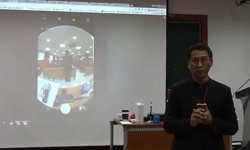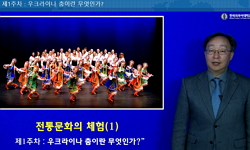Seoul, a 500 year old historical city, experienced a rapid transformation from the traditional capital of Choseon Dynasty to a colonial city of Japanese Empire after Russo-Japanese War, resulting in the establishment of Keijofu(Keijo municipal office)...
http://chineseinput.net/에서 pinyin(병음)방식으로 중국어를 변환할 수 있습니다.
변환된 중국어를 복사하여 사용하시면 됩니다.
- 中文 을 입력하시려면 zhongwen을 입력하시고 space를누르시면됩니다.
- 北京 을 입력하시려면 beijing을 입력하시고 space를 누르시면 됩니다.

러일전쟁 직후 서울의 식민도시화 과정 = The Politico-military Dynamics of the Formation of Japanese-colonized Seoul after Russo-Japanese War: A Comparative Historical Approach
한글로보기https://www.riss.kr/link?id=A76157301
- 저자
- 발행기관
- 학술지명
- 권호사항
-
발행연도
2005
-
작성언어
Korean
-
주제어
Seoul ; Yongsan ; Keijo ; urban space ; colonial city ; dual city ; historical city ; colonial cantonment ; tradition ; inertia ; Russo-Japanese War ; comparative urban history ; 서울 ; 용산 ; 경성 ; 도시공간 ; 식민지도시 ; 이중도시 ; 역사도시 ; 군사기지 ; 전통 ; 관성 ; 러일전쟁 ; 비교도시사
-
등재정보
KCI등재
-
자료형태
학술저널
-
수록면
77-143(67쪽)
- DOI식별코드
- 제공처
-
0
상세조회 -
0
다운로드
부가정보
다국어 초록 (Multilingual Abstract)
Seoul, a 500 year old historical city, experienced a rapid transformation from the traditional capital of Choseon Dynasty to a colonial city of Japanese Empire after Russo-Japanese War, resulting in the establishment of Keijofu(Keijo municipal office), the primate city in colonial Han penninsula, in 1914. Japanes-colonized Seoul, Keijo formed a peculiar gourd-shaped colonial dual city, which juxtaposed two opposing pairs: the contrast of the southern town and the northern town within the historical town (within walls) and that of the historical town and new town -Yongsan area- built around Japanese cantonment.
I examine the historical process of the formation of Japanese-colonized Seoul from Russo-Japanese War(1904) to Japanese annexation of Korea(1910). focusing on the specificity of the politico-military dynamics. Seoul, as is well-known, was decided as a colonial capital due to its traditional role and status as a primary city in Choseon dynasty. But my point is that the politico-military dynamics after Russo-Japanese War are very important in shaping specific spacial features of colonial Seoul. Also the structural inertias of the historical city and resisting forces from both up and down had strong influence on the transformation of the urban space in all over the colonial period.
While at this early phase, the colonial urbanization was led by military power bloc, forming the gourd shaped dual city, consisting of two heterogeneous elements which included historical city area surrounded by walls on one hand, and Yongsan colonial cantonment area the other. But in 1920s and afterwards, its became comprised of the political center, the northern town and the military center, the southern town, the last half was developed into a fan shaped city expansion with the development of Yeong-deung-po plant complexes and suburban housing. Such changes foretold the growth of mega-city in a postcolonial era.
목차 (Table of Contents)
- 1. 머리말: 비교식민지도시사적 문제설정
- 2. 전통적 공간 질서의 관성과 그 식민지적 변용
- 3. 왕조권력의 저항과 양대 식민화 노선의 각축
- 4. 맺음말: 역사도시와 군사기지의 병립
- 參考文獻
- 1. 머리말: 비교식민지도시사적 문제설정
- 2. 전통적 공간 질서의 관성과 그 식민지적 변용
- 3. 왕조권력의 저항과 양대 식민화 노선의 각축
- 4. 맺음말: 역사도시와 군사기지의 병립
- 參考文獻
- (Abstract)
동일학술지(권/호) 다른 논문
-
- 역사문화학회
- 金京七(Kim Gyeong-chil)
- 2005
- KCI등재
-
- 역사문화학회
- 배종민(Bae Jong-min)
- 2005
- KCI등재
-
- 역사문화학회
- 최익제(Choi Ik-je)
- 2005
- KCI등재
-
평안도지역의 근대적 변화와 국사교과서 서술내용 개선방안
- 역사문화학회
- 김상태(Kim Sang-tae)
- 2005
- KCI등재




 KCI
KCI DBpia
DBpia






